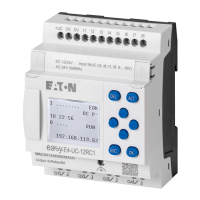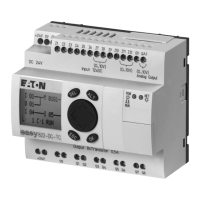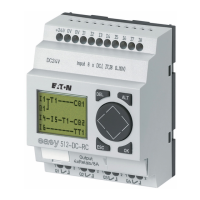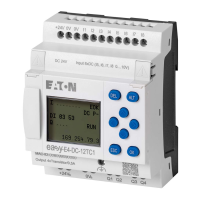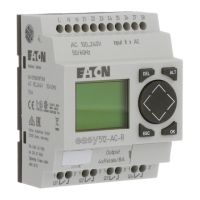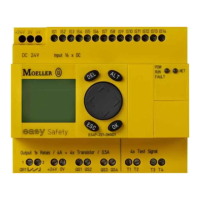11. Connection to other devices
11.4 Modbus TCP
1. The target address is analyzed (distributed among bytes 1 and 2)
a. Byte 1 = Hi; Byte 2 = Lo
2. The value being written is analyzed (distributed among bytes 3 and 4)
a. Byte 3 = Hi; Byte 4 = Lo
3. The value is written to the target register ((NET) marker word)
Response-PDU
If the value is written successfully, the request will be echoed once as a response
(→ Section "Write Single Registers 0x06:", page 550 Request PDU)
In other words, the response is identical to the corresponding request and is used for
confirmation purposes only.
11.4.2.6 Write Multiple Registers 0x10:
This function writes n * 16 bits to N registers ((NET) marker words in the easyE4)
Function Code 1 byte 0x10 ;Write Multiple Registers
Start address 2 byte Must always be 1 less than the starting marker word
(if you want MW1 to be written to, there must be a 0
here)
Number of registers 2 byte 1-123 (0x0001 to 0x007B)
Bye Count 1 byte 2 * N
Register values being written
(marker words)
n * 2 byte Values being written
Table 103: Request-PDU
n = Number of registers being written to
Response to the request being received
1. The starting address is analyzed (distributed among bytes 1 and 2)
a. Byte 1 = Hi; Byte 2 = Lo
2. The number of registers is analyzed (distributed among bytes 3 and 4)
a. Byte 3 = Hi; Byte 4 = Lo
3. The number of bytes is analyzed
4. The marker words are written to the target registers
If the values are written successfully, a response is sent.
This response will contain the function code, the starting address, and the number of
registers from the request
(→ Section "Write Multiple Registers 0x10:", page 551 Request PDU)
Function Code 1 byte 0x10 ;Write Multiple Registers
Table 104: Response-PDU
easyE4 11/18 MN050009 EN www.eaton.com
551
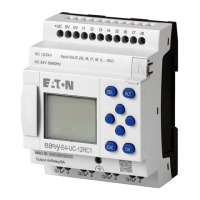
